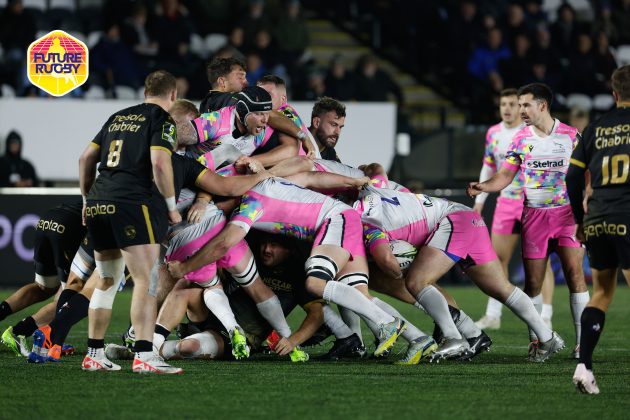Glasgow and Scotland hooker Fraser Brown considers how lineouts could change in the coming years. Part of our Future Rugby series
The obvious starting point is looking at the impact of the driving maul and how it’s come back into fashion in the last few years. As well as the role of break-outs from the set-piece, using the hooker – something you can gain great advantage from when the opposition nine is in the line, at the front too.
Because the maul has become such a weapon, defensive jumpers will now stay down against a good mauling side. This is usually because they are worried about being numbers down and slow to react if they don’t get at the ball in the air.
Modern mauling has simply changed how teams defend. It’s clear to see teams have started to stack the back of their defensive lineout to force attacking teams down the front, so they can use the touchline as an extra defender. The best sides will take on the defence at the back, because if they win it in behind, well the maul is almost impossible to stop from there.
Related: Reimagining the future of rugby broadcasts
For years teams have also tried things like hitting and spinning – trying to get the maul to totally spin around as one – in order to leave the ball-carrier exposed at the back, on their own.
But if we look at the future of rugby and where changes may come, it has to be said: you can’t get rid of the maul. It’s too important a platform.

Leinster and Ulster maul (Getty Images)
Obviously it is a weapon itself, but there are so many other elements to it. It tires opposition players out, creating space later in the half/game when those same players are fatigued. It opens up both sides to attack with plays from breakouts as well.
However, I think the powers that be will try and depower it.
So consider this possible, simple change: you can only join a maul you started in the lineout to begin with. Suddenly that means no +1 (the player standing where a nine traditionally would, but really someone able to come in and drive or rip and offload the ball) coming in as a fetcher. Because straight away that fetcher gives you a one-player advantage.
This little tweak means you can’t add players from the backline once the maul gets moving, either.
We could make a few other changes. Things like referees only calling squint throws if there is competition for the ball. This encourages teams to compete in the air, and could create space further back in the lineout too. Get that, and we could be looking at more launches from off the top. Teams wouldn’t be forced to win it on the five-metre line.
Having no +1’s fetching would also mean that we either see more off-the-top launches or a player from the lineout acting as a fetcher, and thus immediately de-powering the attacking side of the maul.
With all this, teams would have to be more creative from lineouts rather that defaulting to the driving maul and breakout plays. And they would have to be more creative with seven/eight/nine-man lineouts. And again, with that it means more space somewhere else.
Download the digital edition of Rugby World straight to your tablet or subscribe to the print edition to get the magazine delivered to your door.





